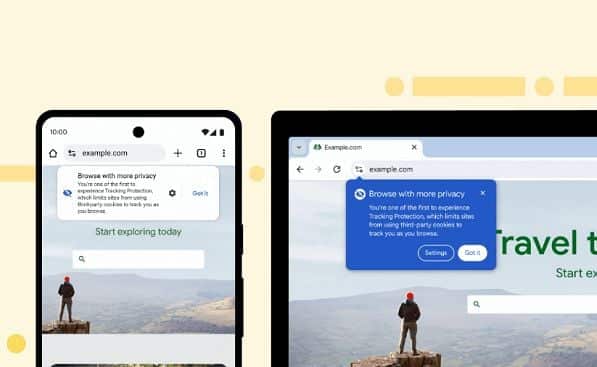Google’s moving to the next stage of its program to phase out web tracking cookies, with the implementation of a new “Tracking Protection” option, which will enable Chrome users to restrict the data that they share when visiting a website.
As you can see in this example, with Tracking Protection, third party data tracking will automatically be limited, while users will also have more options to control what data they provide via cookie insights.
As per Google:
“On January 4th, we’ll begin testing Tracking Protection, a new feature that limits cross-site tracking by restricting website access to third-party cookies by default. We’ll roll this out to 1% of Chrome users globally, a key milestone in our Privacy Sandbox initiative to phase out third-party cookies for everyone in the second half of 2024, subject to addressing any remaining competition concerns from the UK’s Competition and Markets Authority.”
The goal is to learn more about how to optimize the user experience without tracking, while again, also giving users more options to limit the use of their personal data, if they so choose.
When Tracking Protection is enabled, some websites may not load correctly, so users will also have the option to temporarily re-enable third-party cookies for that specific website.
It’s another step towards revising web data practices, and changing how websites function in this respect, which will eventually change the landscape for digital marketing, and measuring user behaviors.
Which you’re no doubt preparing for already, though some marketers have pretty much resigned themselves to the fact that they’ll deal with the impacts as they come up, and adjust from there. I would advise against this, and suggest that you start looking for ways to gather more first-party insights to assist in your targeting, including improved audience segmentation and subsequent connection processes.
The right preparation could hold you in far better position to improve your marketing and outreach, when cookie tracking is eventually shut down, or limited more and more over the coming months.
This new update is another reminder that this is happening, and that you should be planning accordingly.
Google says that participants in this initial test of Tracking Protection will be selected randomly – if you’re chosen, you’ll get a notification when you open Chrome on either desktop or Android.
You can learn more about Google’s “Privacy Sandbox” initiative here.



